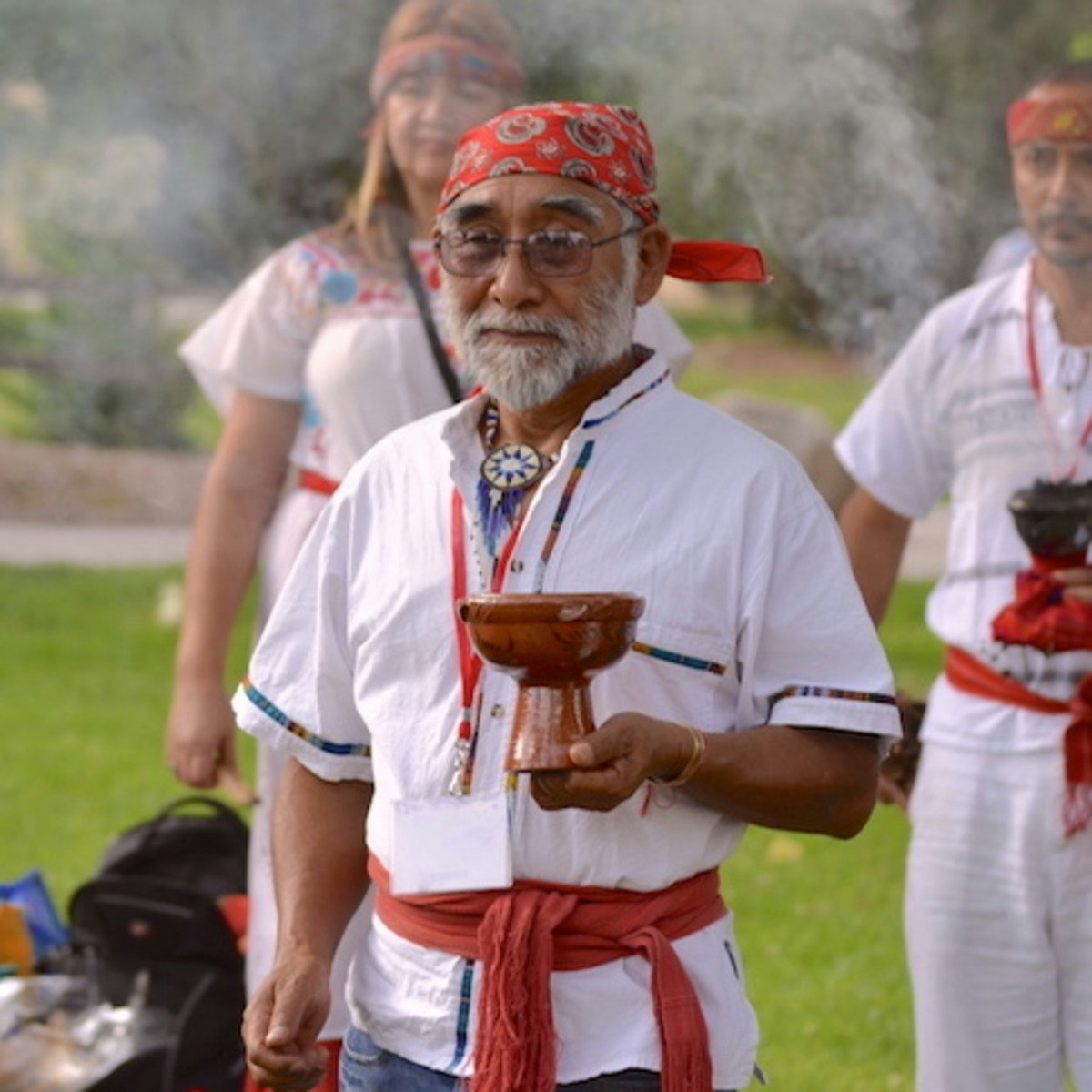Back to Courses









Arts And Humanities Courses - Page 20
Showing results 191-200 of 464

Responsive Web Design in Adobe XD
Responsive Web Design in Adobe XD is the sixth course in a program that will equip you with the skills you need to apply to entry-level jobs in user experience (UX) design. In this course, you will design a responsive website using Adobe XD, a popular design tool. You will complete the design process from beginning to end: empathizing with users, defining their pain points, coming up with ideas for design solutions, creating wireframes and prototypes, and testing designs to get feedback. By the end of this course, you will have a new design project to include in your professional UX portfolio.
In addition, you’ll learn how to search for entry-level UX design jobs, create a resume that highlights your skills and accomplishments, and build your professional portfolio website.
Current UX designers and researchers at Google will serve as your instructors, and you will complete hands-on activities that simulate real-world UX design scenarios. Learners who complete the seven courses in this certificate program should be equipped to apply for entry-level jobs as UX designers.
By the end of this course, you will be able to:
- Apply each step of the UX design process (empathize, define, ideate, prototype, test) to create a responsive website.
- Develop designs in a popular design tool, Adobe XD.
- Plan information architecture and create sitemaps for website designs.
- Apply common layouts for web pages.
- Plan and conduct a usability study to gather feedback about designs.
- Iterate on designs based on research insights.
- Work with design systems in Adobe XD.
- Add a new design project to your professional UX portfolio.
- [Optional] Create or update a UX-focused resume.
- [Optional] Learn how to search for and apply to introductory-level jobs in the field of UX.
This course is suitable for beginner-level UX designers who have completed the previous five courses of the Google UX Design Certificate. Alternatively, learners need to have a strong foundational understanding of the design process; experience creating wireframes, mockups, and prototypes; and the ability to conduct usability studies. No previous experience with Adobe XD is required.

Music for Wellness
You love music. You listen to music all the time. Maybe you sing, play an instrument, or compose music. You don’t need to have musical talent to use music to enhance your well being, and even your health.
Learn simple techniques to enrich your mind, body, and spirit through music. The methods can be applied in your daily life, particularly when you are feeling down or stressed out. Developed by a board-certified music therapist and a vocalist/pianist/composer/recording artist specializing in Indian music, these strategies combine science with the wisdom of Eastern philosophy.
In the course, discover how to unlock your creativity. You will learn not only how to listen to music in a new way, but also how to listen to the impact that music has on you. You will find out how to care for yourself by practicing coping techniques that are supported by music that is special to you.

The Making of the US President: A Short History in Five Elections
As Donald Trump takes office as the forty-fifth president of the United States, this course explores presidential elections in historical perspective, via five case studies. It tells the story of key campaigns in US history, and by doing so it investigates how politics changed over time—and how understanding the past sheds light on the current campaign. From the arrival of "dirty politics" to the impact of the "digital revolution," the course looks at the historical background to some of the key phenomena that shaped the controversy-laden campaign of 2016.
The five elections that we'll investigate are among the most significant in American political history. In 1800, Thomas Jefferson won the presidency in a contest that encouraged politicians to reform the electoral college, the system by which presidents are still chosen. The election of Abraham Lincoln in 1860 prompted the outbreak of the Civil War. It's an election that helps us to understand the development of political parties. In 1968, the Vietnam War was a dominant concern for Americans, and yet foreign policy played a secondary role in Richard Nixon's victory. Twelve years later, in 1980, Ronald Reagan won an election that initiated a new era of conservatism. Finally, we'll turn our attention to the election that took Trump's predecessor, Barack Obama, to the White House in 2008. Many saw the Obama's success not only as revealing the impact of the digital revolution on campaign politics, but also as signaling a turn to progressivism.
Image credits:
Course logo - "Former President Truman holds a copy of the famous Chicago Daily Tribune paper declaring 'Dewey Defeats Truman'" Harry S. Truman Library & Museum (https://www.trumanlibrary.org/photographs/view.php?id=38592).
Course banner - "US Flag Backlit" by Joshua Nathanson, CC BY-SA 3.0 (https://commons.wikimedia.org/wiki/File:US_Flag_Backlit.jpg).

Exploring Beethoven’s Piano Sonatas Part 2
Welcome to Part 2 of Exploring Beethoven's Piano Sonatas!
I'm delighted to launch another set of new lectures of this course as Part 2. As before, this class is meant for people of all levels of experience with Beethoven's music (including no experience at all!). Remember that you are able to watch the lectures as many times as you like, at whatever pace is comfortable for you.
As I’ve done with the first set of Beethoven lectures, I look forward to meeting with students—online and in person, in various cities. The dates and locations will be posted in the Announcements and Events section, as part of the course content. So please remember to check back there for details.
In these four new lectures, we will explore the following sonatas:
• Sonata Op. 2, No. 3
• Sonata Op. 13 (“Pathetique”)
• Sonata Op. 53 (“Waldstein”)
• Sonata Op. 90
The Dolfinger-McMahon Foundation supports Curtis’s lifelong learning initiatives.

The Bible's Prehistory, Purpose, and Political Future
With its walls razed to ground by Babylon’s armies, Jerusalem joined a long line of ancient vanquished cities—from Ur and Nineveh and Persepolis to Babylon itself. While some recovered from the destruction, others did not. But none responded to political catastrophe by fashioning the kind of elaborate and enduring monument to their own downfall that we find in the Bible. Most conquered populations viewed their subjugation as a source of shame. They consigned it to oblivion, opting instead to extol the golden ages of the past. The biblical authors in contrast reacted to loss by composing extensive writings that acknowledge collective failure, reflect deeply upon its causes, and discover thereby a ground for collective hope.
Working through colorful biblical and ancient Near Eastern texts, and drawing on an array of comparative examples, the course illustrates the thoroughgoing manner with which biblical authors responded to defeat by advancing a demotic agenda that places the community at the center. The aim of the biblical authors was to create a nation, and they sought to realize this goal via a shared text, which includes stories and songs, wisdom and laws. This corpus of writings belongs, without a doubt, to humanity’s greatest achievements. Whereas the great civilizations of the Near East invested their energies and resources into monuments of stone that could be destroyed by invading armies, the biblical authors left a literary legacy that has been intensively studied until the present day. More important, these authors’ visionary response to defeat brought to light a radical new wisdom: the notion that a people is greater than the state which governs it, and that a community can survive collapse when all of its members can claim a piece of the pie and therefore have a reason to take an active part in its collective life.

Make Any Image into a Vector Graphic with Inkscape
By the end of this project, you’ll be able to import and convert raster images, including photos and old logos, to a vector graphic with Inkscape. Inkscape is a free and open-source vector graphics program, and it offers built-in tools that help you turn images into vector graphics, making them easy to resize and edit. These vector versions can be used for all kinds of projects, from web images to stickers.
To convert raster images to vector graphics, you’ll learn about and use two of Inkscape’s tools: Trace Bitmap and the Bezier Pen Tool. You’ll also practice editing those images to customize them for later use. Finally, you’ll practice exporting what you’ve created.
Note: This course works best for learners who are based in the North America region. We’re currently working on providing the same experience in other regions.

Musicianship: Chord Charts, Diatonic Chords, and Minor Keys
After a tremendous response from learners on Coursera, Berklee Online has created a Developing Your Musicianship specialization, and this course is the second course in the series. If you have a basic knowledge of music theory or if you have completed Developing Your Musicianship I, this course will continue to help you understand key musical concepts, enabling you to create and perform contemporary music. Taught by Berklee College of Music professor George W. Russell, Jr., the course includes four lessons that delve into the next level of harmony and ear training.
The course will introduce you to new key signatures, including minor tonalities, and how they are constructed. You will train your ear to hear minor intervals and 7th chords. You will learn how to build 7th chords, and how to build common chord progressions. You will also learn the major pentatonic scale and how to construct melodies using this scale.
The course culminates with an assignment that asks you to compose and perform an 8-measure composition using popular chord progressions and the Major pentatonic scale. Just like Developing Your Musicianship I, the course is designed to impart the joy of creating music and sharing it with others.

Curanderismo: Traditional Healing of the Mind, Energy & Spirit
As the third of four courses on Curanderismo, the art of Hispanic/Latino traditional medicine, this course focuses specifically on traditional healing of mind, energy and spirit. As an educational and cultural platform, this course will share a number of traditional body therapies. Trained traditional healers will share their knowledge of cleansings from different cultures such as spiritual, energetic and Tonalli Cleansing.
Learners will not become certified traditional healers at the completion of this course but will be able apply basic principles or traditional medicine for health and illnesses. They will become familiar specifically with the traditional therapy of the sweat lodge temazcal, laugh therapy risaterapia and they will learn about the creation of sacred spaces and healing grief through Día de los Muertos.
The Final Curanderismo course will be:
• Global and Cultural Influences of Traditional Healing: African traditional medicine from Uganda and Gabon; Afro-Latino from Cuba and Puerto Rico, Native American spiritual cleansings and Mayan acupuncture and other topics.
REQUIRED TEXTS
- Curanderismo: The Art of Traditional Medicine without Borders by Eliseo Torres
- Curandero: Traditional Healers of Mexico and the Southwest by Eliseo Torres with Imanol Miranda
Where to buy:
https://he.kendallhunt.com/product/curanderismo-art-traditional-medicine-without-borders
https://he.kendallhunt.com/product/curandero-traditional-healers-mexico-and-southwest
OPTIONAL TEXTS
Curandero: A life in Mexican Folk Healing by Eliseo Torres & Tim Sawyer
Healing with Herbs & Rituals: A Mexican Tradition, Eliseo Torres, edited by Tim Sawyer
Where to buy:
https://www.barnesandnoble.com/w/curandero-torres-eliseo-cheo/1120135382?ean=9780826336415&st=PLA&sid=BNB_1341481610&sourceId=PLAGoNA&dpid=tdtve346c&2sid=Google_c&gclid=EAIaIQobChMI3_6LmYev3gIViuNkCh3IPgUyEAQYASABEgLYXfD_BwE
https://www.barnesandnoble.com/w/healing-with-herbs-and-rituals-torres-eliseo-cheo/1120135381?ean=9780826339621&st=PLA&sid=BNB_825204424&sourceId=PLAGoNA&dpid=tdtve346c&2sid=Google_c&gclid=EAIaIQobChMIrrvswYev3gIVBsRkCh3BXQCHEAQYASABEgLnl_D_BwE
PODCAST:
- Blubrry podcast - https://www.blubrry.com/normallol/41068835/normal-lol-63-depersonalization-mental-wellness-curanderismomexican-traditional-healing-with-eliseo-cheo-torres/
- Itunes Episode 63 - https://itunes.apple.com/us/podcast/normal-lol-depersonalization-derealization-anxiety/id1065740418?mt=2

Making Architecture
Making architecture offers a unique insight into the mind and work of an Architect, starting with the basics of the profession and culminating with the production of a scaled site model. The course should act as ideal preparation for those interested in undertaking an undergraduate degree in Architecture, although its flexible, intriguing and enjoyable content makes it accessible for all those looking to increase their knowledge in the field.
Delivered primarily by Professors from the IE School of Architecture and design in Segovia (Spain), the course begins by examining the mind-set of an Architect - asking how they think and what they do to train their creative minds, moving on to using inspiration from the environment to stimulate design ideas. Finally, the course concludes by looking at some of the more technical aspects of Architecture - such as composition, form, space and hierarchy - and stressing the importance of creating a story that helps define your design.
This fascinating content is delivered principally from the stunning design studio at the IE school of Architecture and features external videos from a few beautiful locations in the city of Segovia. Finally, it includes interviews from Pritzker Prize executive director - and Dean of the school of Architecture and design at IE - Martha Thorne, with a number of award winning practising architects such as Sarah Wigglesworth and Cristoph Ingenhoven.

How to Use Rectangle and Elliptical Marquee: Adobe Photoshop
By the end of this project, you’ll be able to use both the rectangular and elliptical marquee tools to select, move, and edit pieces of multiple images in Adobe Photoshop. You’ll practice creating different kinds of selections--including quick, simple selections and complex ones—to create a collage.
Use the marquee tools to turn many images into one, and control what’s visible inside an image.
Popular Internships and Jobs by Categories
Find Jobs & Internships
Browse
© 2024 BoostGrad | All rights reserved